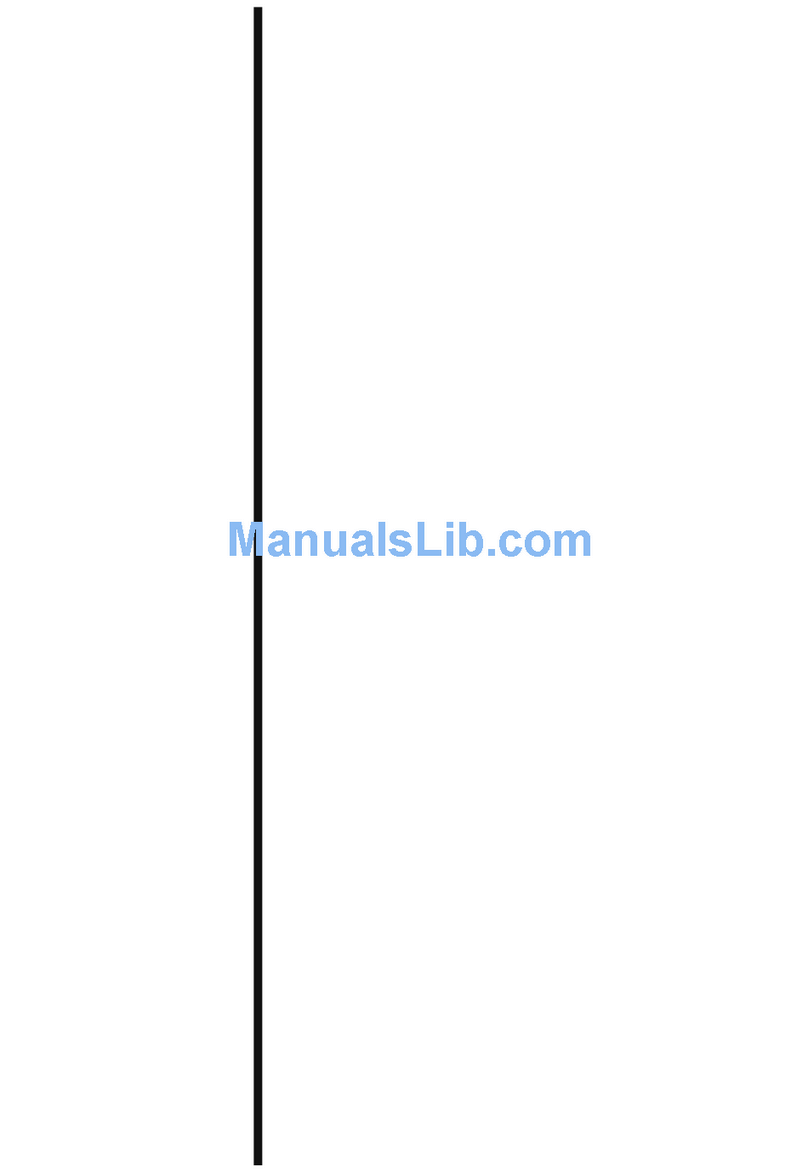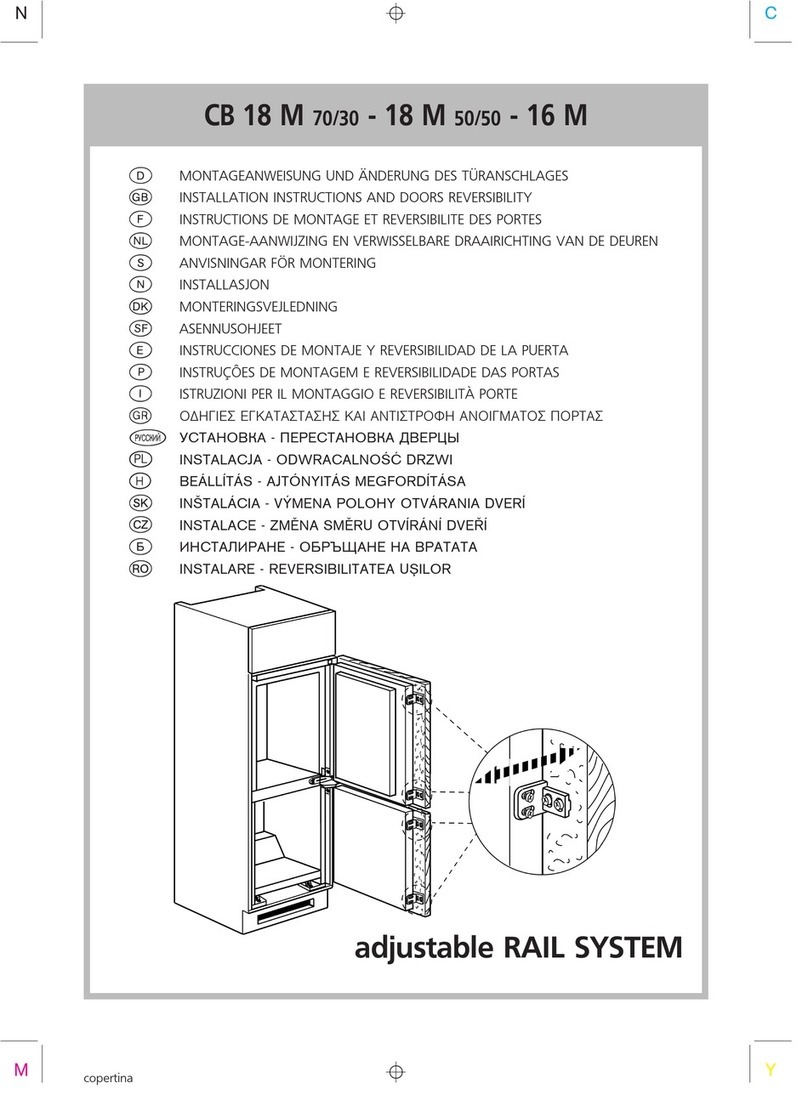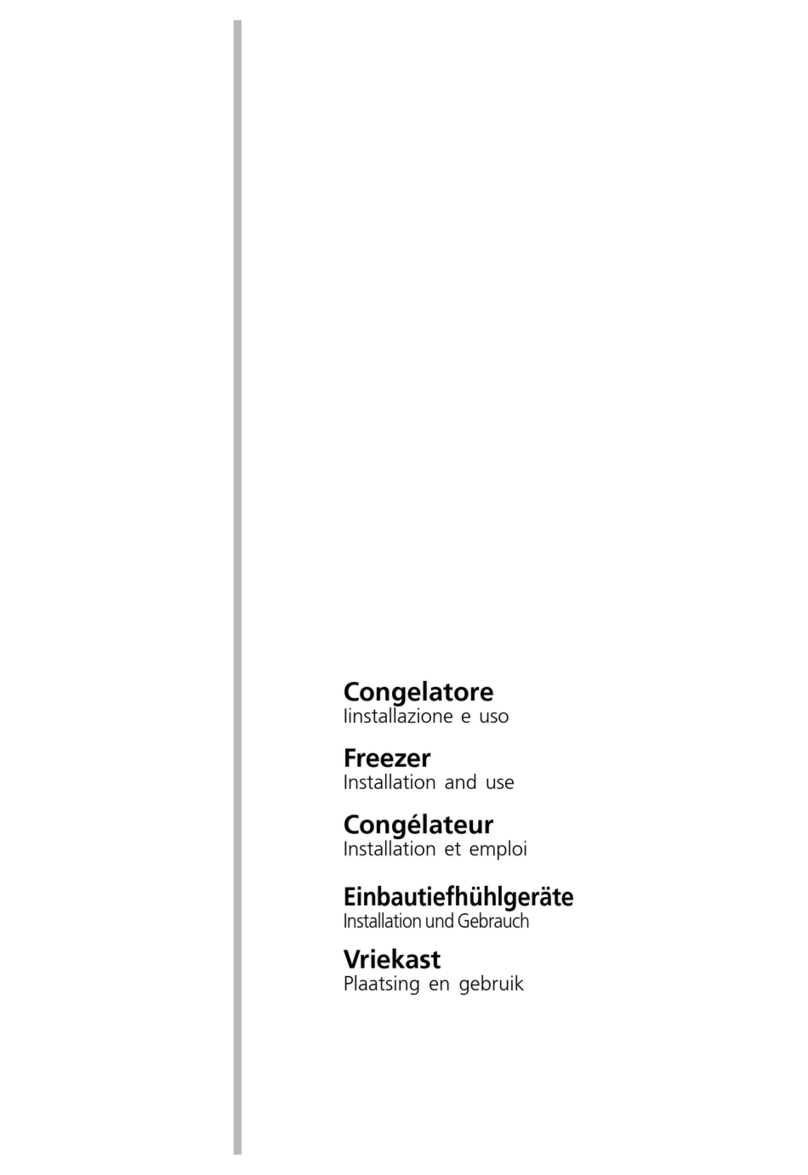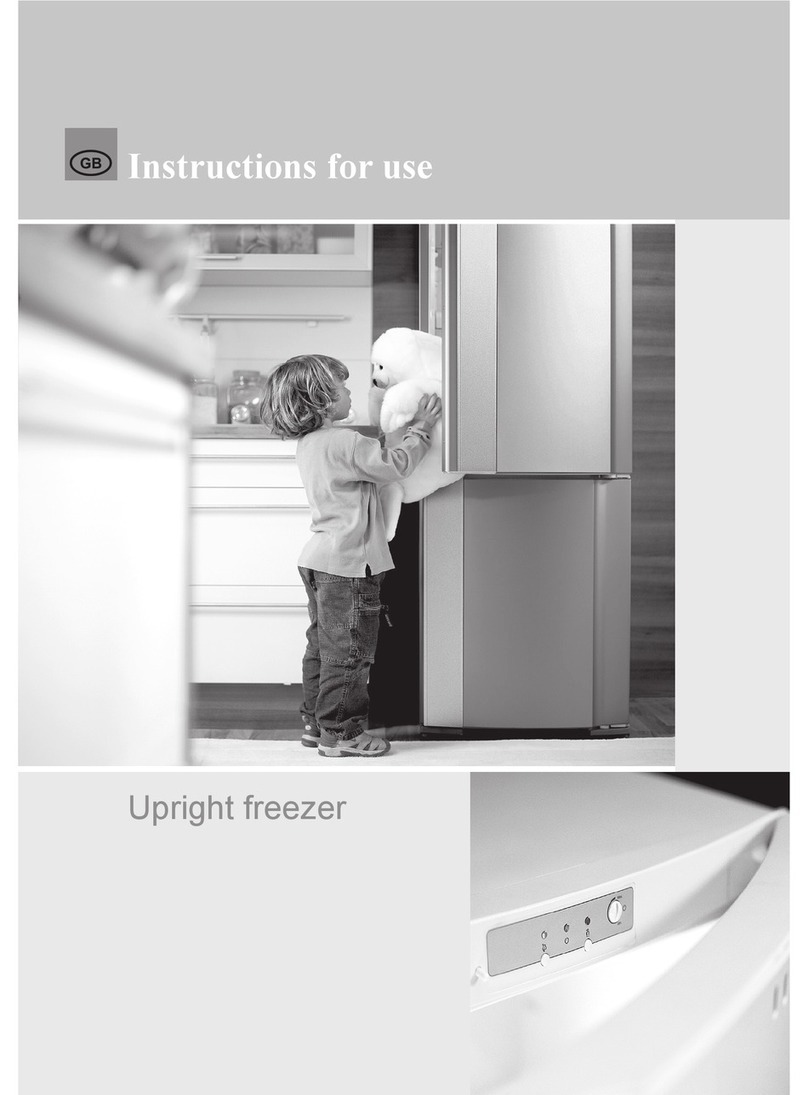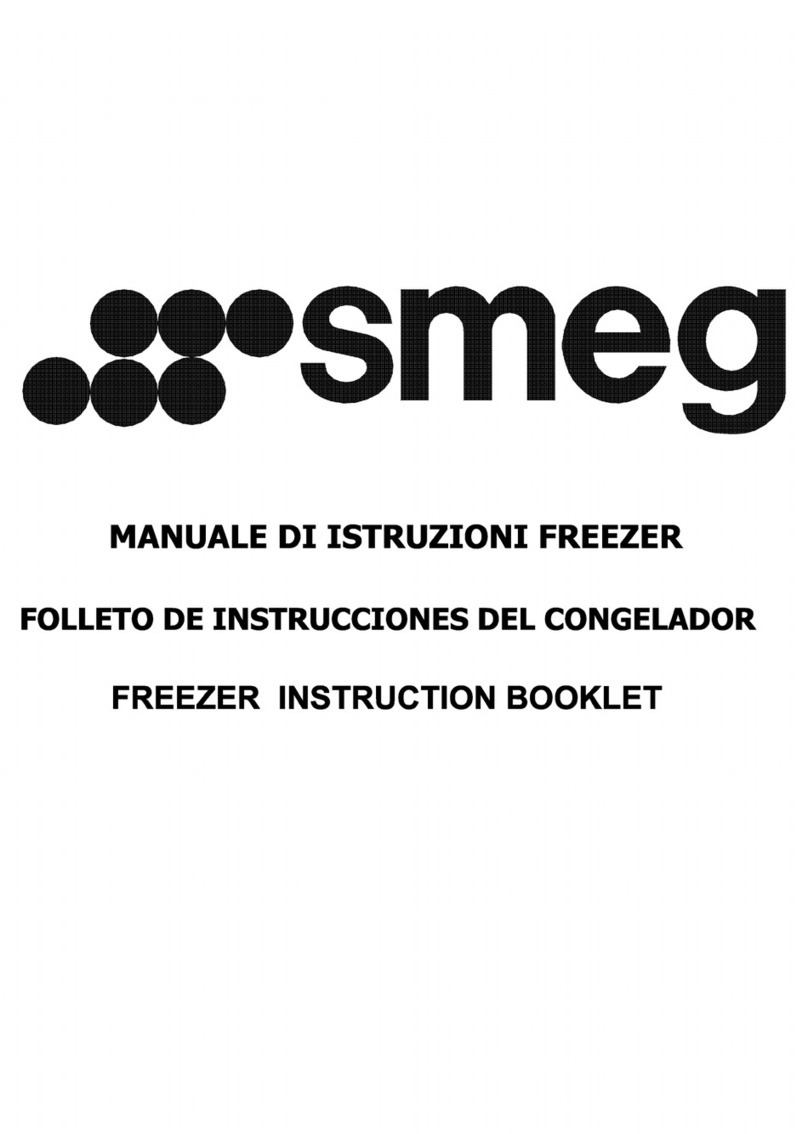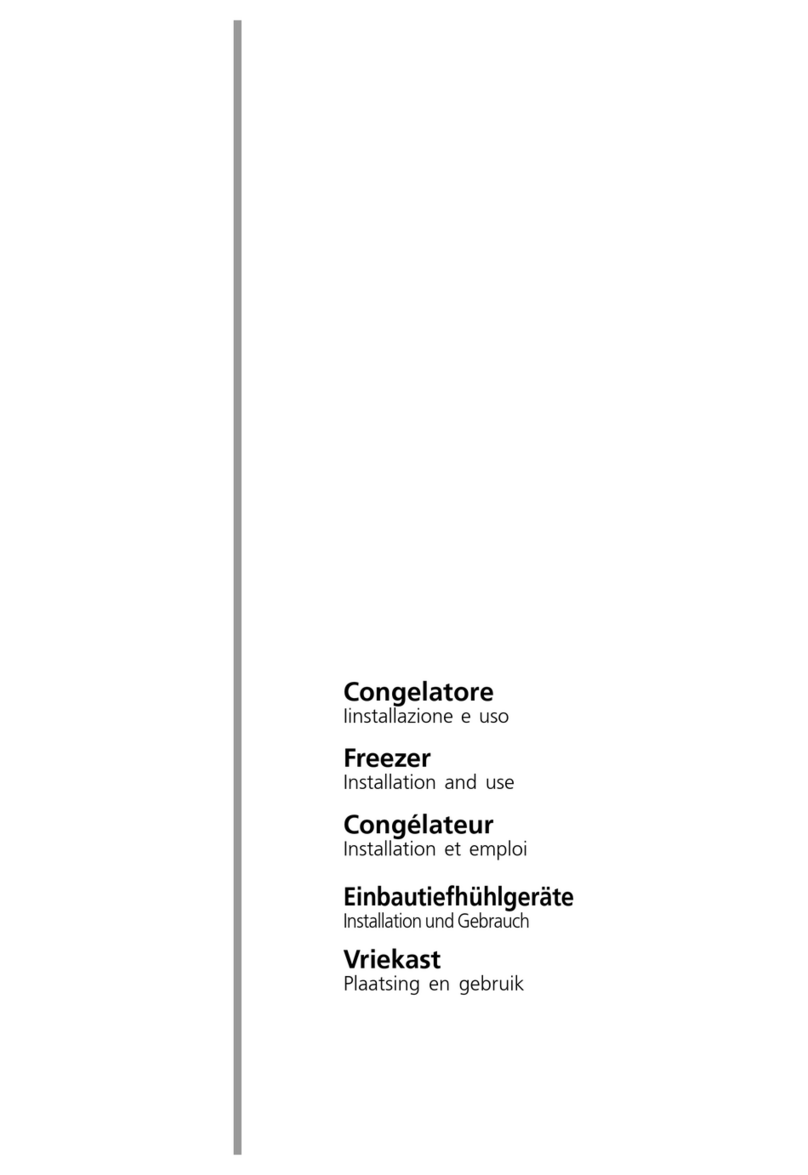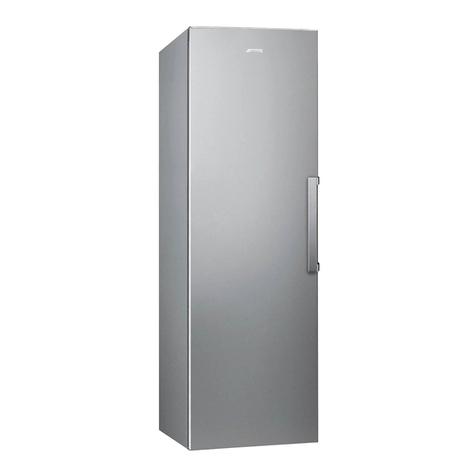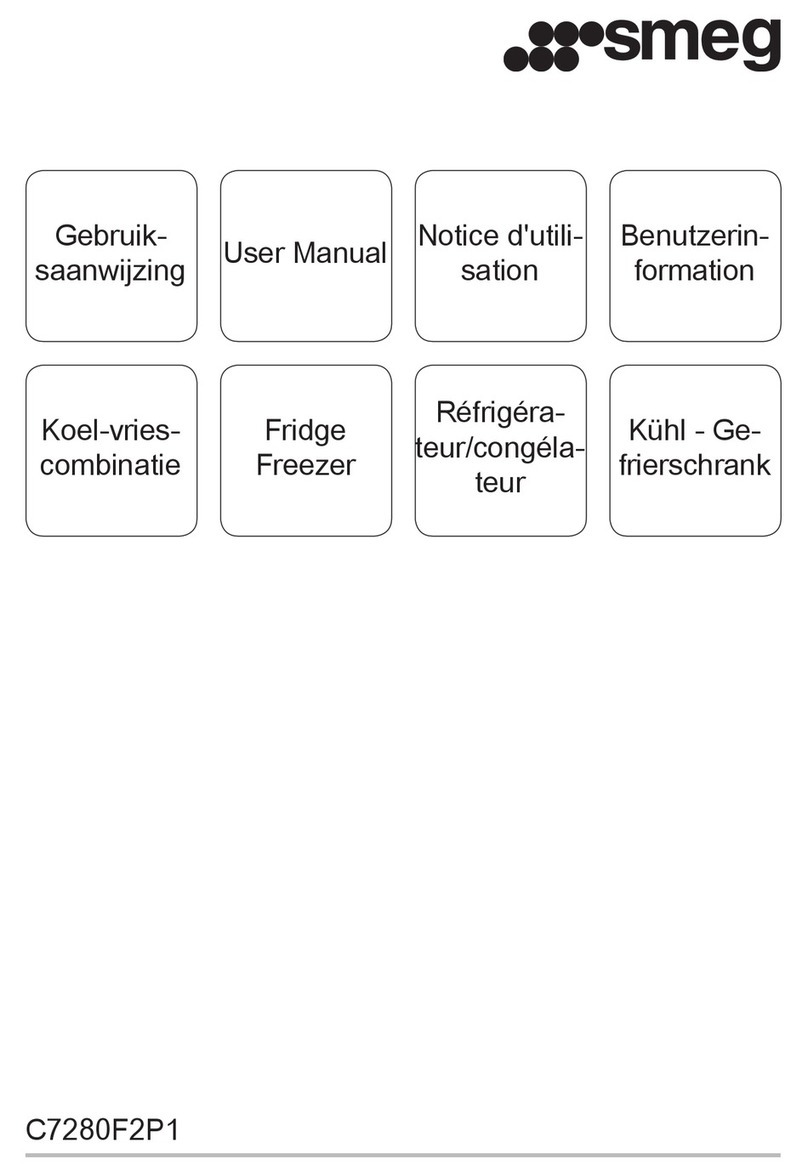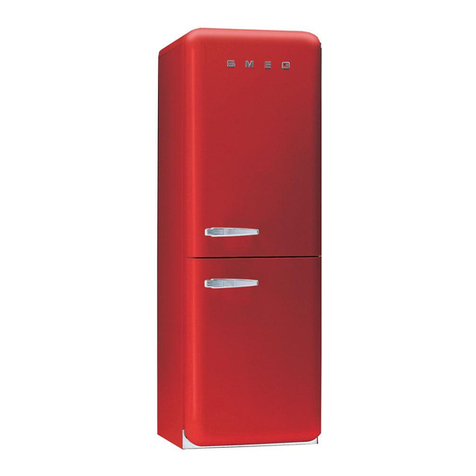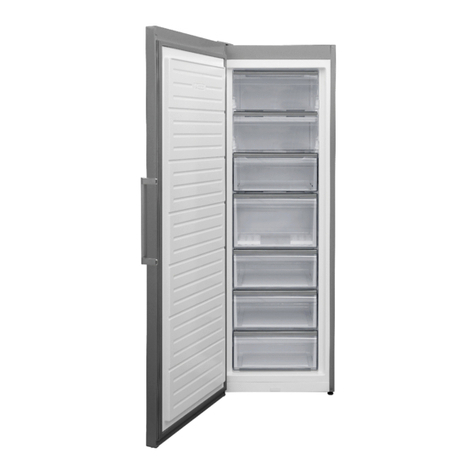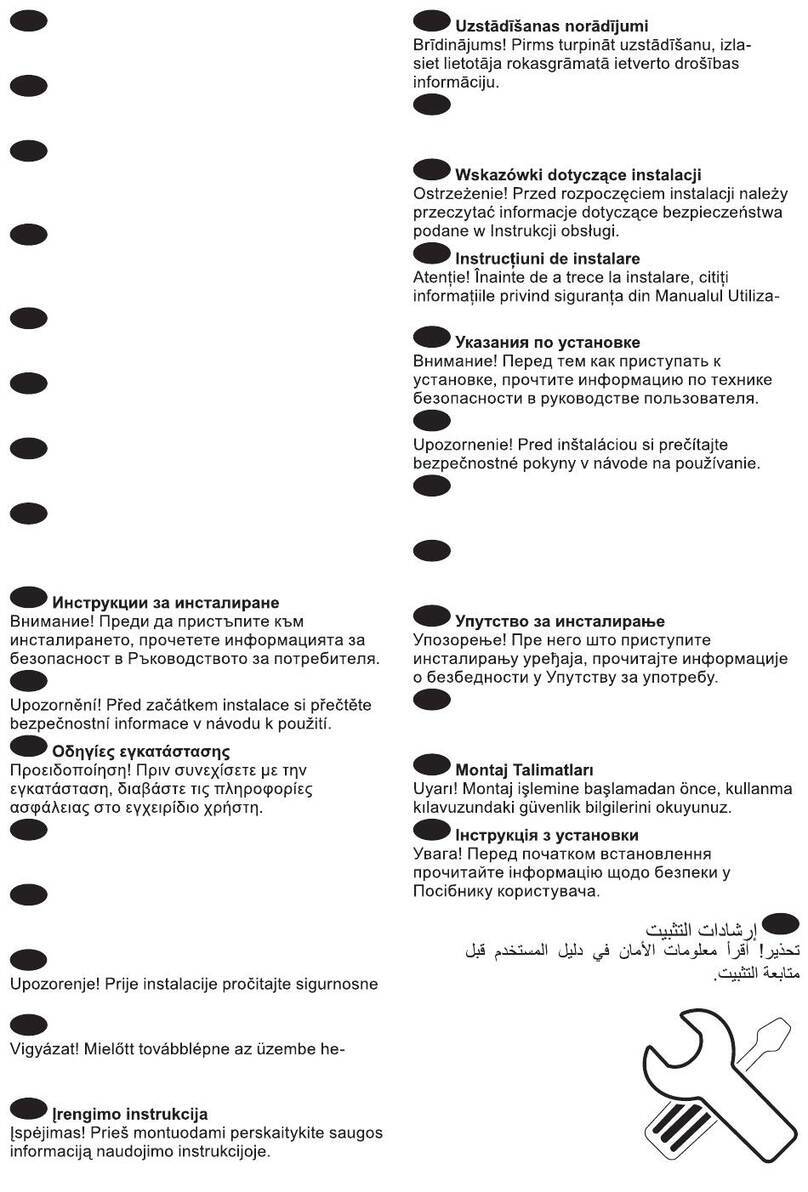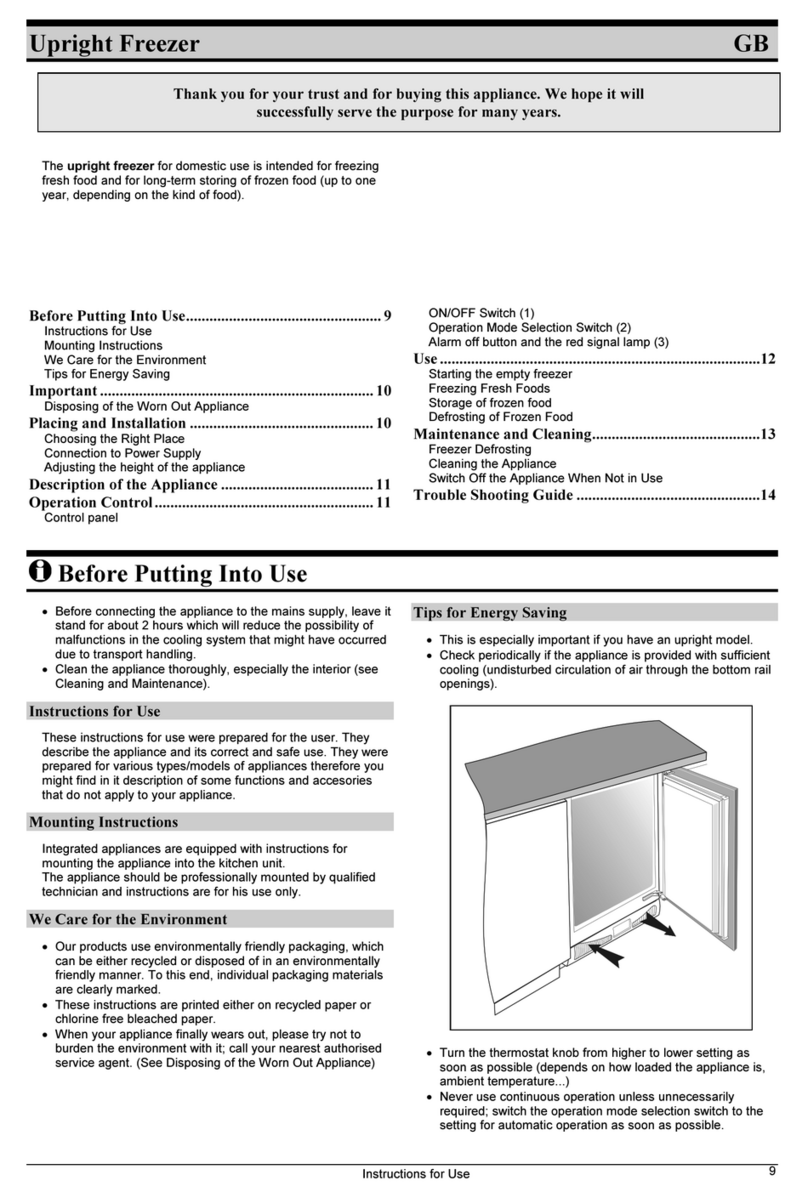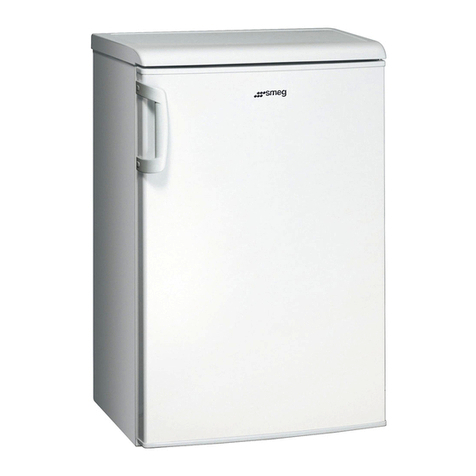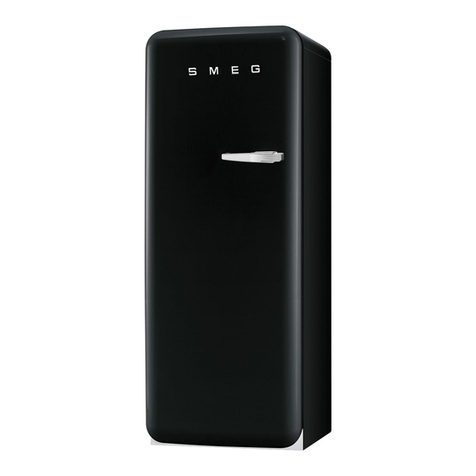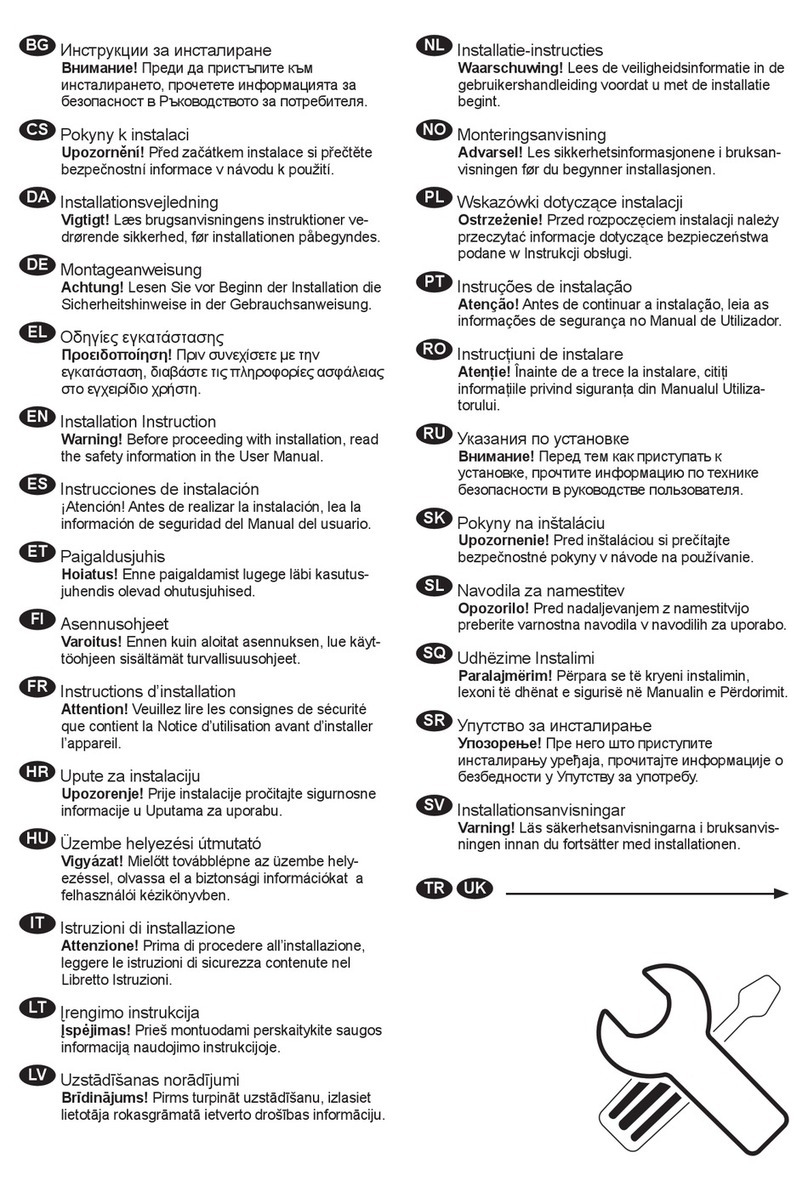Instructions for Use12
Tips for Energy Saving
• Try not to open the door too often,
especially when the weather is wet and hot.
Once you open the door, mind to close it as
soon as possible. This is especially
important if you have an upright model.
• Every now and then check if the appliance
is sufficiently ventilated (adequate air
circulation behind the appliance).
• Turn the thermostat knob from higher to
lower setting as soon as possible (depends
on how loaded the appliance is, ambient
temperature...)
• Never use continuous operation unless
unnecessarily required; switch the
operation mode selection switch to the
setting for automatic operation as soon as
possible.
• Before freezing packages of fresh foods,
make sure they are cooled to ambient
temperature.
• Ice and frost layer increase energy
consumption, so do clean the appliance as
soon as the layer is 3-5 mm thick.
• If the gasket is damaged or if it turns out
that the sealing is poor, the energy
consumption is substantially higher. To
restore efficiency, replace the gasket.
• The condenser on the rear wall should be
always clean, free of dust or any impurities.
• Always consider instructions stated in
sections Positioning and Energy Saving
Tips, otherwise the energy consumption is
substantially higher.
Important
• If you've bought this appliance to replace
an old one equipped with a lock that cannot
be opened from inside (lock, bolt), make
sure that the lock is broken. This will make
it impossible for the children to lock
themselves in the appliance and suffocate.
• Mind to connect the appliance correctly to
the mains supply (see Connection to the
Mains Supply).
• Do not touch the cooled surfaces while the
appliance operates, especially not with wet
hands, because the skin might stick to the
cold surfaces.
• Do not freeze bottled drinks, especially not
fizzy ones such as mineral water, sparkling
wine, beer, cola etc., because liquid
expands during freezing and the glass
bottle is very likely to blow up.
• Never try to eat frozen food (bread, fruit,
vegetables), because you may get
frostbites.
• Carefully check the foods for color and
smell and if you are in doubt about their
quality, throw them away because they may
be spoiled and therefore dangerous to eat.
• Disconnect the appliance from the mains
before repairing (only a qualified technician
should repair it) and before cleaning.
• Do not use sharp object for defrosting the
appliance. Use only enclosed tools or tools
recommended by the manufacturer.
• For the sake of environment protection - be
careful not to damage the rear wall of the
appliance (the condenser unit or the tubes -
for example when moving the appliance) or
any part of the refrigerating system inside
the appliance.
• The refrigerating system of the appliance is
filled with refrigerant and oil, so when the
appliance is damaged, handle it with care
and dispose it of in compliance with
environmental protecting precautions. (See
We Care for the Environment).
• Heating element incorporated in the
appliance, all around the rim, is controlled
by the operation of the compressor and it
prevents the door gasket to freeze on to the
freezer compartment.
• When activating the Super function, the red
light may turn on. This is normal condition
and there is no need for warning.
• If the supply cord is damaged, it must be
replaced by the manufacturer or his service
agent or a qualified person in order to avoid
hazard.
• The rating plate is in the interior or on the
rear wall of the appliance.
